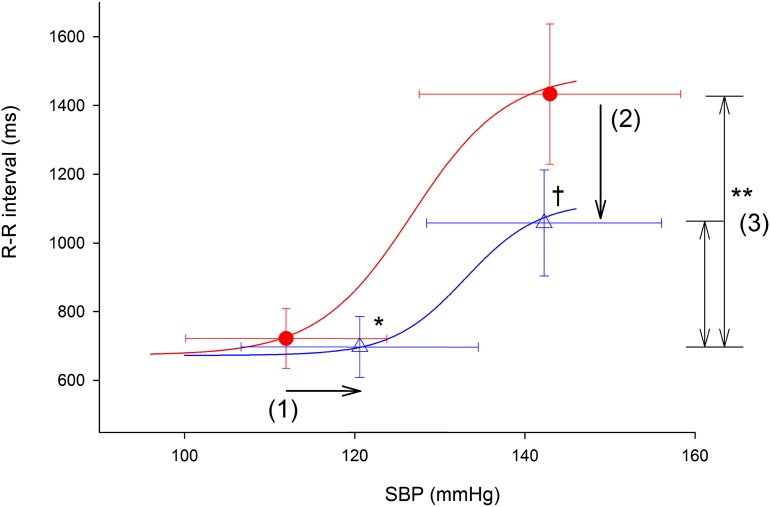Figure 3.
Baroreflex function measured by the modified Oxford method during baseline euglycemia (circles) and hypoglycemia (triangles). Group average values for the threshold and saturation blood pressures and corresponding cardiac intervals (R-R) are displayed for each glycemic condition. A sigmoidal curve is fitted to these group data for both glycemic conditions. Horizontal error bars denote the SD of blood pressure, and the vertical error bars denote the SD of the R-R interval. During hypoglycemia, the baroreflex threshold shifts to higher blood pressures (arrow 1), the R-R interval at the blood pressure saturation point decreases (arrow 2), and the R-R interval range is lower (double-headed arrows 3). Data for BRS (the slope of the linear portion of the baroreflex sigmoid curve) showing a significant decrease with hypoglycemia are reported in Table 1. *P < 0.005 for the difference in the baroreflex blood pressure threshold, hypoglycemia vs. baseline. †P < 0.001 for the difference in maximum R-R interval at the blood pressure saturation point, hypoglycemia vs. baseline. **P < 0.001 for the difference in R-R interval ranges, hypoglycemia vs. baseline.

